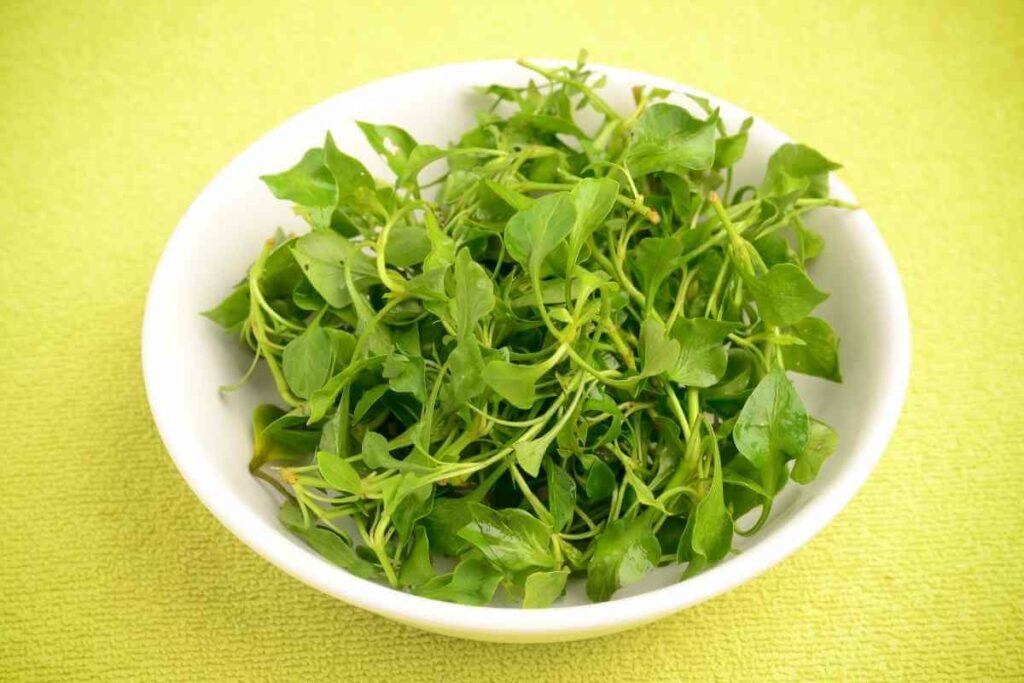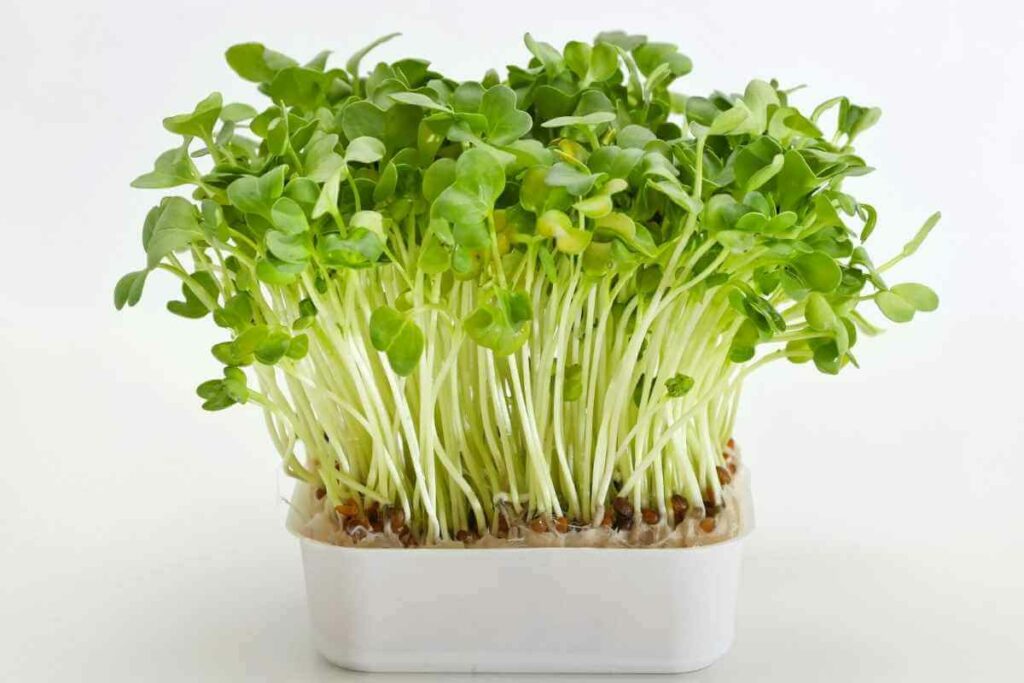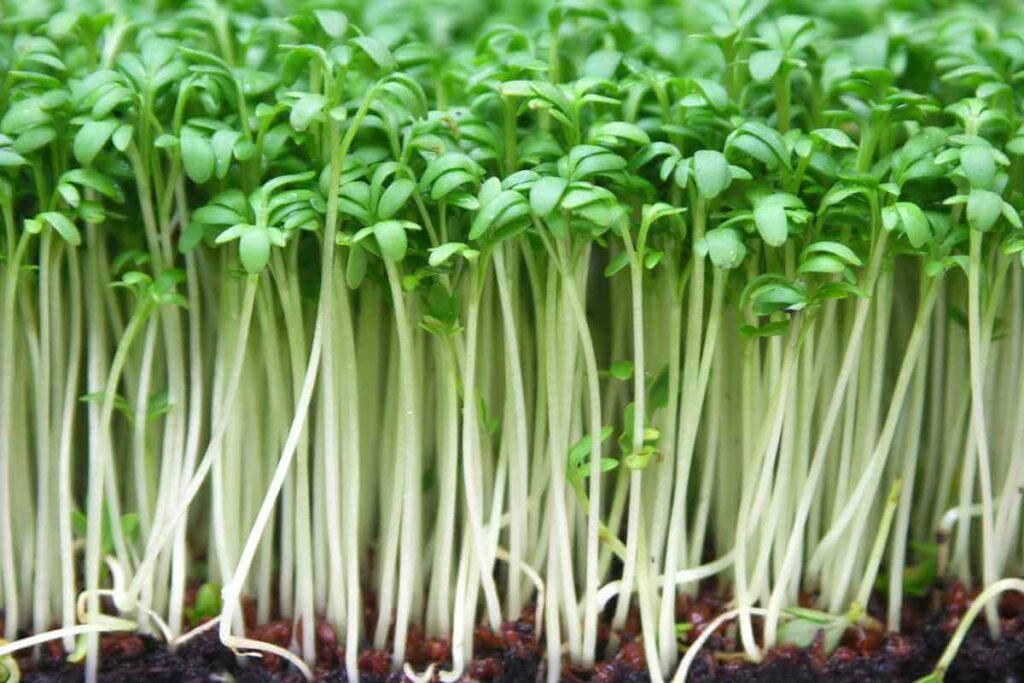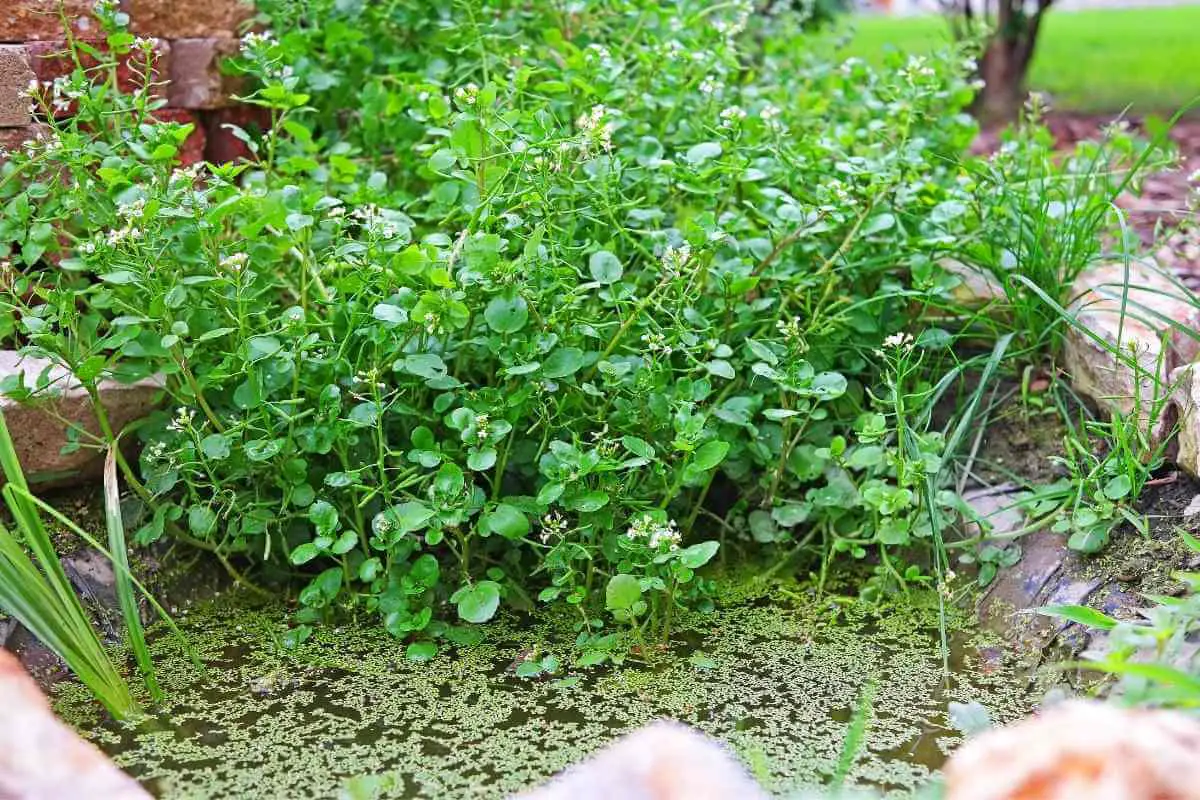Yes, you can eat watercress from your pond. This is because watercress grown in ponds is relatively safer compared to wild ones.
You can either boil watercress; its soup is nutritious and sweet, or consume them raw. When taking it raw, you can swish the watercress in Milton followed by clean water.
Watercress can be invasive when the pond conditions are conducive for growth.
People are advised against eating wild watercress due to the increased risk of contamination from grazing animals which transmits liver fluke to people.
However, in a home pond devoid of animals, the watercress is safe and perfect for human consumption.

That said, it would be best to cultivate watercress in your vegetable garden to ensure you have a constant and safe supply.
Good to Know: Watercress is a nutritious plant containing vital vitamins like vitamin B and C and crucial anti-cancer elements. It also helps balance ions and minerals in the body, further enhancing its value as a food plant.
The Risks Associated with Watercress
While watercress grows in different areas, you should avoid wild ones due to several health risks.
Grazing animals can contaminate the waters and transmit liver fluke to human beings; the waters also harbor snails which complete the parasites’ life cycle.
You can find liver fluke eggs in ponds and streams, and watercress can grow in such waters.
Liver fluke infections cause chronic abdominal pains and can be life-threatening due to challenging treatment.
You can contract liver fluke by consuming poorly cooked watercress, especially those harvested in wild waters.

While liver fluke infestation is common in the Far East, several cases have been recorded in Europe and the United States.
However, you can eat watercress harvested in streams provided you are sure they are not polluted and lack snails and grazing livestock.
But such cases are rare, and you should never bet on that due to uncertainty regarding the streams’ purity.
Your health remains your top priority, and safeguarding includes ignoring these nutritious food plants when grown in questionable areas.
If you find people who have been eating wild watercress from a stream for a long time, you may consume it.
Nonetheless: It would help if you always were cautious even when other people appear to care less about their wellbeing and eat questionable watercress.
Why You Should Grow Watercress In Your Ponds
Establishing the safety levels of watercress harvested in streams may be challenging.
Thus growing them in a pond is ideal for mitigating such risks.
At home:
- Always preserve your watercress by vacuum packing it to retain its quality and nutritious value.
- You can also keep them in water or a pond to keep them fresh.
In essence, you need to grow your watercress in the pond to ensure you have a safe and consistent supply.
However, regardless of the source, you should always cook your watercress thoroughly.
Although you can get watercress in groceries and supermarkets, it is often hard to find safe ones because they are very perishable.
How to Grow Watercress at Home
Growing watercress at home is not easy.

This is because you need to have constant moving water to replenish your pond. Stagnant water ruins the plant as well as dry soil cover.
Thus, you can insert the watercress into a pot or container and submerge it in a pond. Before submerging the pot, place some gravel and small rocks in it before adding soil and fertilizer.
Alkaline conditions promote watercress growth, and thus you may add some limestone to the pot.
Steps to be taken:
- You should place the pot in an area close to a water source, such as a tap or tank, for easy topping up and refreshing.
- You should avoid placing the pot in direct sunlight; instead, place it in a shady surrounding.
You can purchase sprigs in farm shops and place them in water till they shoot small roots.
The other option is acquiring wild watercress from streams and similarly preparing them. You can always get wild watercress in streams during autumn or summer; it flourishes the most in these seasons.
You can also establish a large watercress bed in your compound or create a pond and grow it there.
Constant running water is essential for maximum watercress growth and flourishing; you can install solar equipment or a water pump.

To prevent liver fluke infestation, you should always ensure the pond remains clean, especially from animals and water snails.
It is also important to establish sufficient depth to ensure there is room for running water and enough soil for the plant’s roots.
From Experience: While watercress growth in ponds is now common in most homes, it is demanding, especially regarding the water supply. However, it is quite enjoyable and a sustainable process.
Final Thoughts
While watercress might be delicious and nutritious, you should be cautious before eating it.
Generally, if you source it from your pond, it should be safe. This is because the likelihood of it being contaminated is relatively low.
However, unless you can verify the safety of wild watercress, never consume them.
This is because grazing animals can contaminate the waters and transmit liver fluke to human beings; the waters also harbor snails which complete the parasites’ life cycle.
